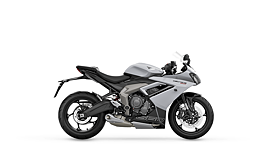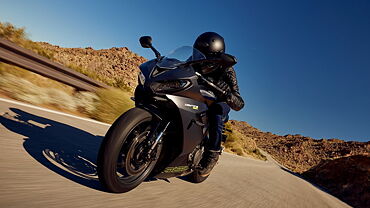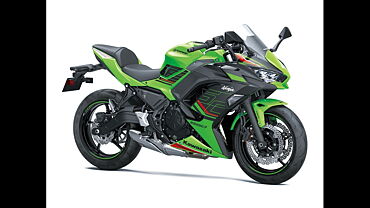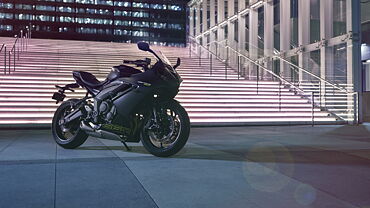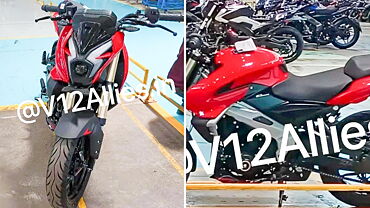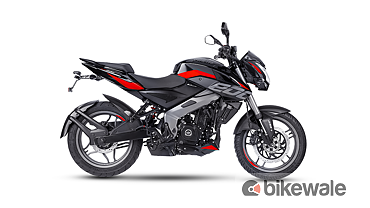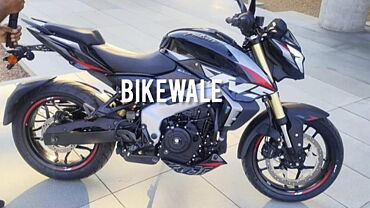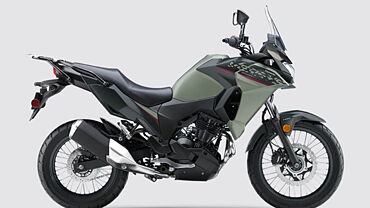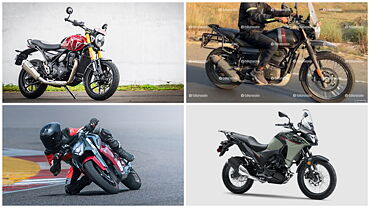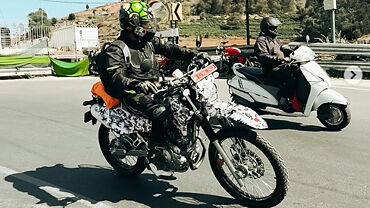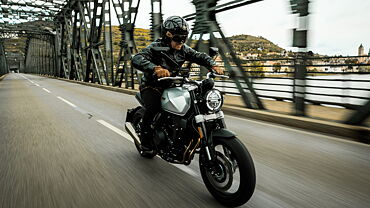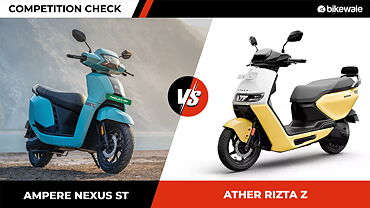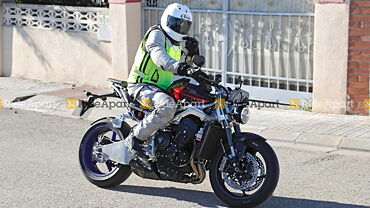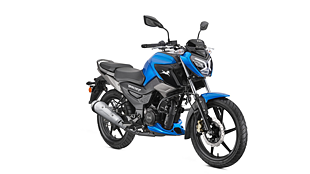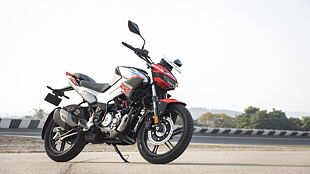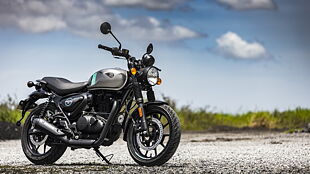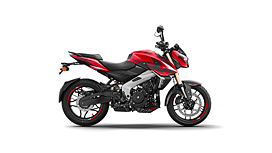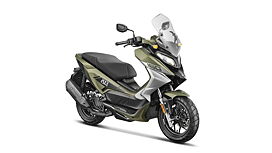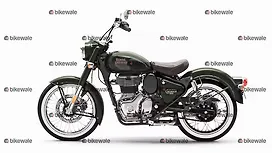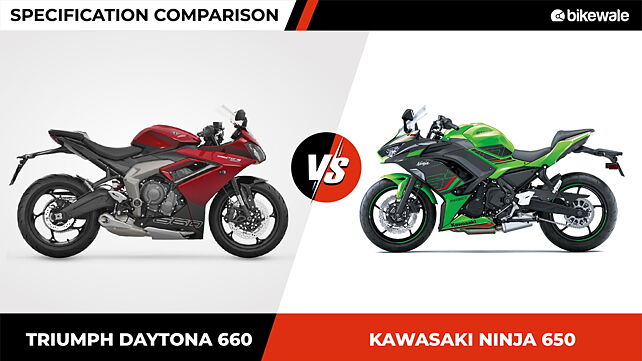
Triumph has entered the middleweight sport tourer segment with its Daytona 660 and it only has one rival currently in India, that is the Kawasaki Ninja 650. We have compared the two bikes here, on paper in various aspects.
Design

Both bikes get a split LED headlight setup with a transparent visor. Even the overall design and bodywork of the Daytona 660 and the Ninja 650 is quite sharp and youthful. But the Ninja 650’s fuel tank makes it look slightly bulkier than the Daytona 660. The brit looks sleeker than the Japanese rival.
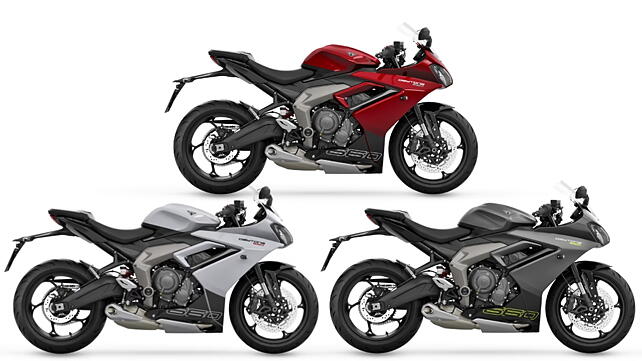
Triumph is offering the Daytona 660 in three paint schemes Satin Granite with Satin Jet Black, Snowdonia White with Sapphire Black, and Carnival Red with Sapphire Black. On the other hand, the Ninja 650 can be bought in a single paint scheme of Lime Green.
Features
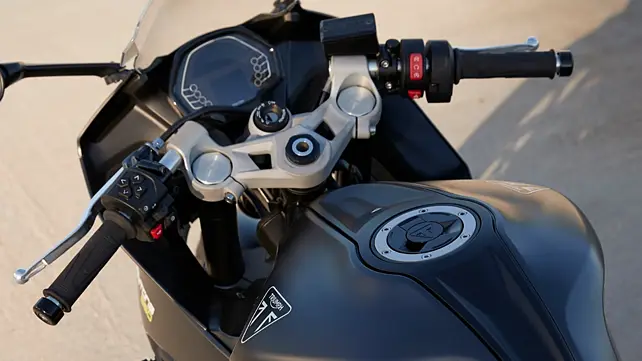
Triumph has equipped the Daytona 660 with LED illumination, a TFT with optional smartphone connectivity for turn-by-turn navigation, call, music, and SMS control, ride modes – Road, Rain, and Sport – traction control, and dual channel ABS. Meanwhile, the Ninja 650 comes with LED illumination, a TFT with smartphone connectivity for the call and SMS access, traction control, and ABS. It misses out on ride modes.
Engine
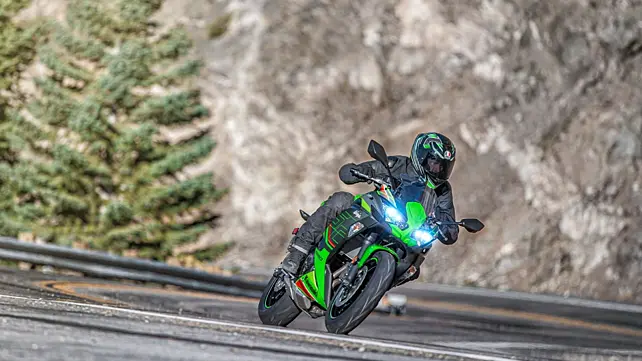
Powering the new Daytona is an inline three-cylinder 660cc liquid-cooled engine that makes 95bhp at 11,250rpm and 69Nm at 8,250rpm. It is linked to a six-speed gearbox and gets an optional quickshifter too. The Kawasaki Ninja 650 draws power from a 649cc parallel-twin motor and it makes 68bhp and 64Nm. The Ninja too gets a six-speed gearbox. It’s quite evident that the Dayton makes substantially more power than the Ninja.
Hardware
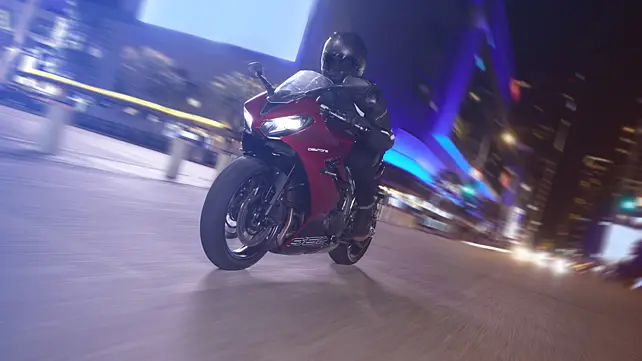
Triumph has equipped the Daytona 660 with Showa 41mm Separate Function Big Piston front forks and a preload adjustable monoshock. It gets twin 310mm front discs and a single 220mm rear disc with ABS. The braking hardware is linked on 17-inch wheels wrapped in a 120/70 front and 180/55 rear tyre.

The Kawasaki Ninja 650 gets 41mm telescopic front forks and an offset, linked rear shock. It gets a twin 300mm front and a single 220mm rear disc mounted on 17-inch wheels. These are shoed in 120/70 front and 160/60 rear tyre. The Daytona 660 weighs 201kg and gets a 14-litre fuel tank whereas the Ninja 650 tips the scale at 196kg and gets a 15-litre fuel tank.
Price
Triumph is yet to launch the Daytona 660 in India and we expect it to be priced around Rs. 9 lakh (ex-showroom). The Kawasaki Ninja 650 retails at Rs. 7.16 lakh (ex-showroom, Delhi).
